Exploding Dots
12.1 Invent. Create. Enjoy!
The lovely thing about Exploding Dots is that it provides a space int invent, create, and play! This is the nature of true joyous mathematics.
Here we give some snippets of ways students and adults from all around the world are creating and inventing with Exploding Dots. Share your inventions and ideas with me using this contact link. (If you have attachments, let me know.)
Goldfish & Robin and friends have some fun advice on some ways to create and play with Exploding Dots.
Let’s make this a growing, community page of global play!
This page is just starting. More will come as more is submitted!
Taking Dots into the Second Dimension
People are playing with two-dimensional arrays of squares.
Goldfish & Robin see the crazy \(2 \leftarrow 3\) machine as a diagonal.
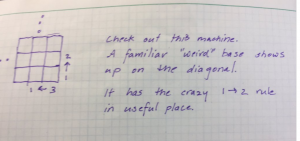
Here are some more thoughts on the matter and their much deeper video on all this – and more – appears here.
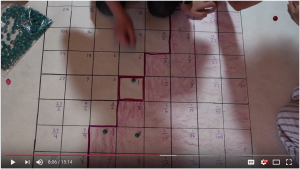
Kiran B. has been playing in this direction too, but for two-variable polynomial division
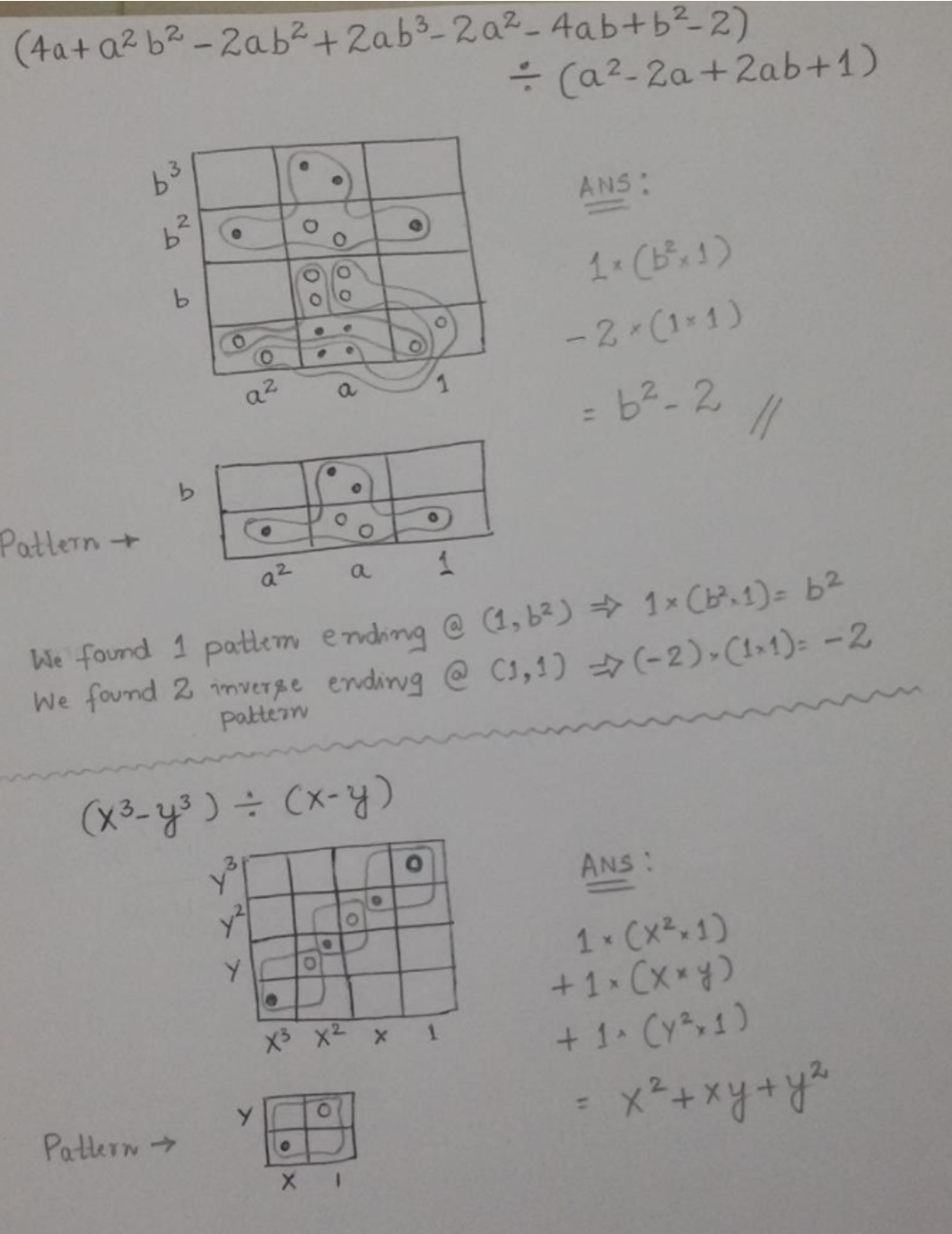
and for solving simultaneous equations.
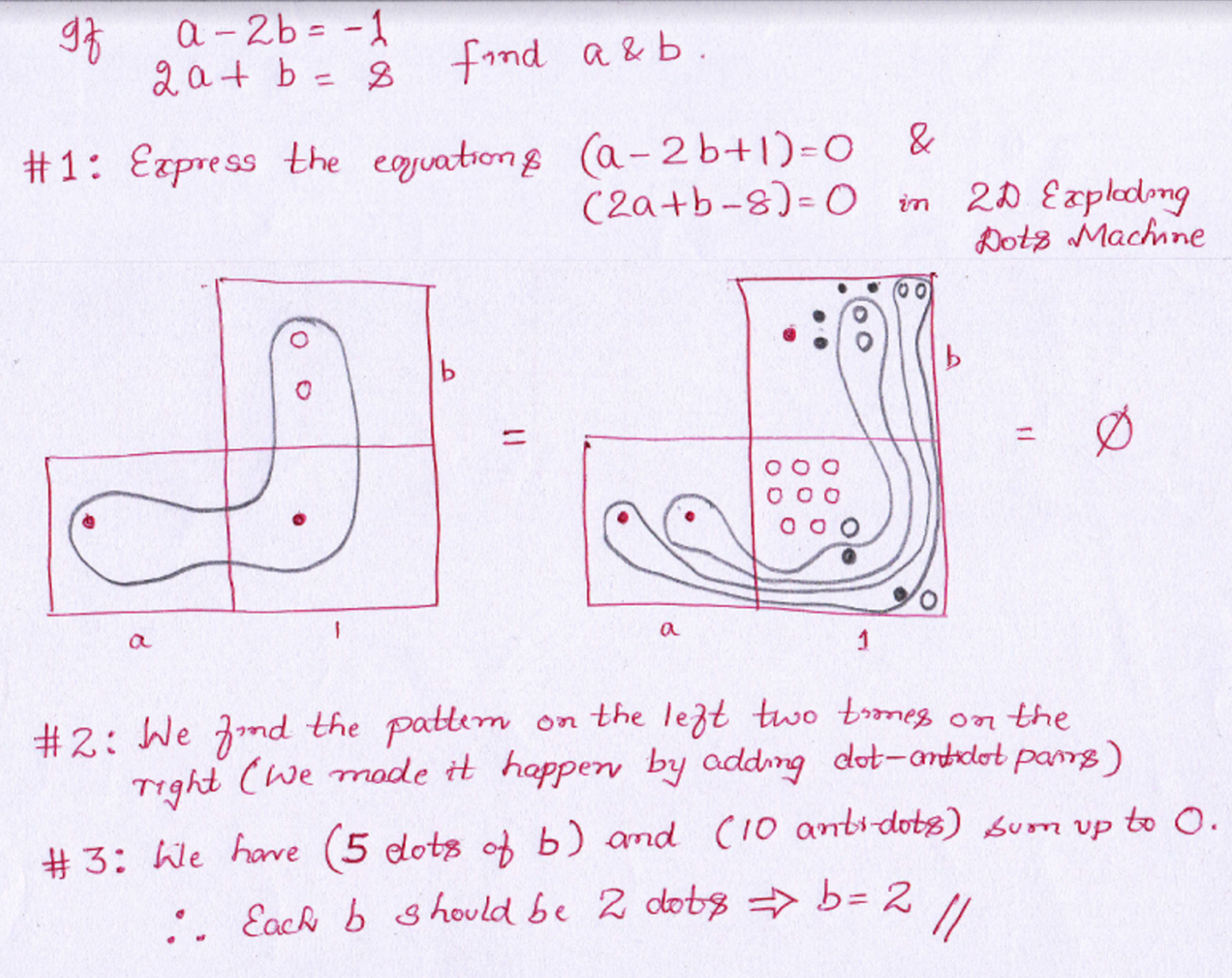
He’s written about this work too in a blog post.
He has since started playing with expressions of the form \(a+\sqrt{b}\) via two-dimensional arrays too: Kiran 2D_ExplodingDots_PascalTriangle .
And why stay with square arrays? Goldfish and Robin are playing with multiplicative patterns in triangular arrays.
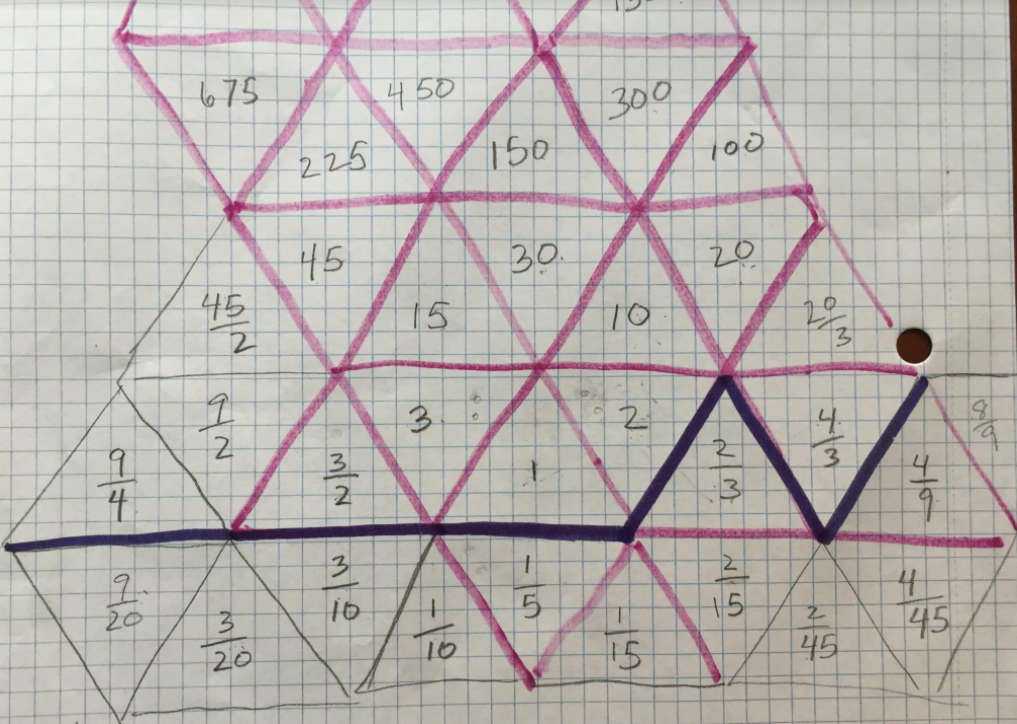
Other Models for Exploding Dots
Why not use disappearing cards or smash cheese balls as or eat berries to demonstrate Exploding Dots machines?
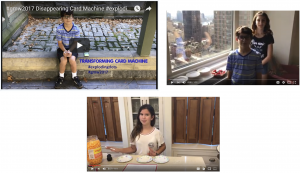
Going back into the Past
Can one make sense of the Roman numeral system via Exploding Dots? Sure!
 Kiran B. explains his work here.
Kiran B. explains his work here.
And sometimes people realise they are discovering the same math in different ways! The triangle grid approach is the same interleaving idea.
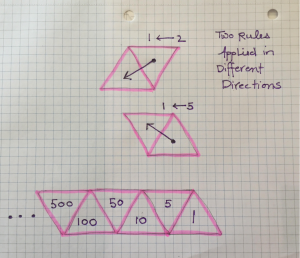
Actually build a machine!
Glen Whitney of mathwalks.org did! See it in action here.

Surprising Connections
After reading the chapter on polynomial division, mathematics Professor Richard Hoshino, author of The Math Olympian, shared the following with Ambassadors of the Global Math Project:
Looking for Palindromes
Dr. Gary Davis writes about fun and cool numerical exploration on his site crikeymath.com. This story on a search for palindromes in a \(2 \leftarrow 3\) machine is intriguing a number of people.
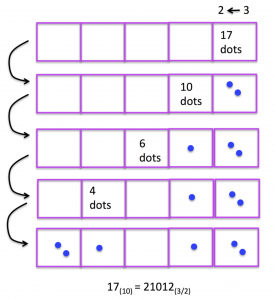
Dr. James Propp writes about it too in his beautiful Mathematical Enchantments column here.
Working with Irrational Bases
Here’s another gem from Kiran B.
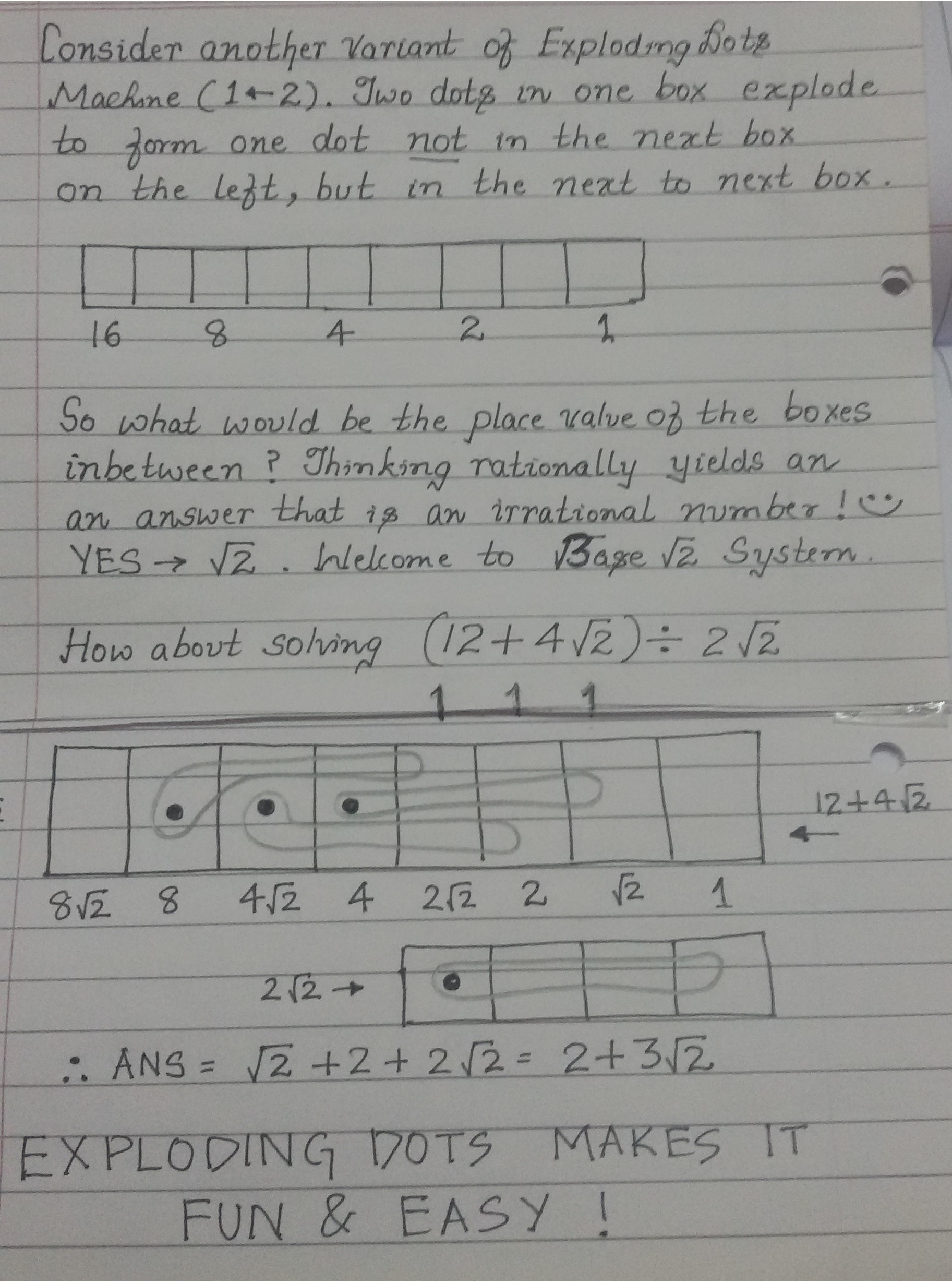
Look Into the Past
Professor Stephen Lucas of James Madison University points out that many wonderful ideas are discovered, re-discovered, and emerge in all sorts of ways and variants of ways. One can explore what work was done in the past that matches or ties in with the work we play with today.
For example, an ancient counting device, a “counting table,” consisted of a flat surface with vertical lines drawn across it. A counter placed on a line represented a power of ten (lines here correspond to boxes in a \(1 \leftarrow 10\) machine), and placing place a counter to the left of a line represented five of that power of ten (to match Kiran B’s interleaving of two machines as above). Arithmetic on these tables was done essentially our Exploding Dots way.
Variants of this design were introduced: The Romans moved the “fives” to the top of the table, rather than to the side of the line, and some historians suggest this led to the Chinese abacus with beads on rods and a horizontal spacer to separate the units from the fives.
Care to research the full history of the abacus?
Also … for two dimensional work, check out “Napier’s Chessboard Abacus.” Martin Gardner wrote about it in Knotted Doughnuts and other mathematical entertainments (W.H.Freeman and Company, 1986).
Division in a \(2 \leftarrow 3\) Machine
Performing division in this weird machine is surprisingly subtle, hard, and mysterious. Here are some thoughts on the matter from Goldfish & Robin. Video
Resources
Books
Take your understanding to the next level with easy to understand books by James Tanton.
BROWSE BOOKS![]()
Guides & Solutions
Dive deeper into key topics through detailed, easy to follow guides and solution sets.
BROWSE GUIDES![]()
Donations
Consider supporting G'Day Math! with a donation, of any amount.
Your support is so much appreciated and enables the continued creation of great course content. Thanks!
Ready to Help?
Donations can be made via PayPal and major credit cards. A PayPal account is not required. Many thanks!
DONATE![]()


